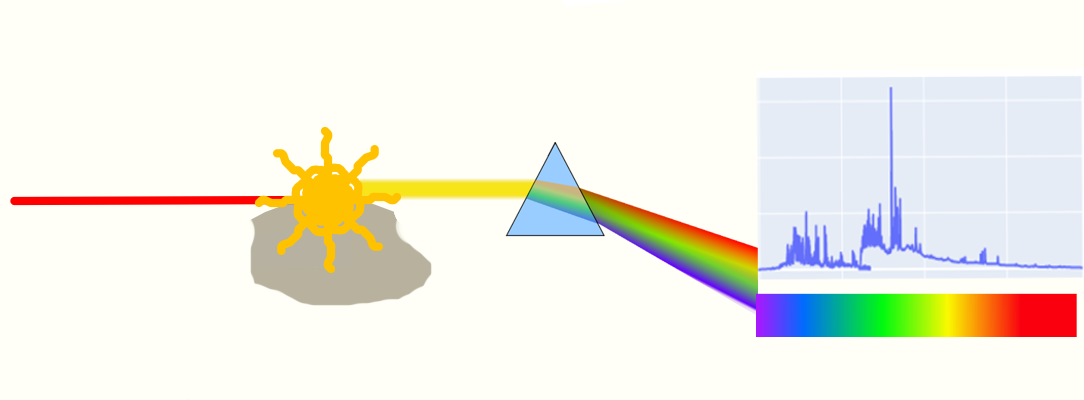Chapter 1: LIBS Imaging fundamentals
1.1. LIBS
In Laser-Induced Breakdown Spectroscopy or Laser Spark Spectroscopy we use laser to make a spark on the sample,  collect the light of the spark to a spectrometer, which disperses the light into its different wavelengths i.e colors and measures how much of each there is.
collect the light of the spark to a spectrometer, which disperses the light into its different wavelengths i.e colors and measures how much of each there is. 

This is an atomic emission spectrum of the sample which reveals us how much of each element was in the spark made from the sample.
Note on terminology of Laser Induced Breakdown Spectroscopy LIBS, also called Laser Spark Spectroscopy and Laser Plasma Spectroscopy. LIBS is a nice abbreviation but laser spark spectroscopy is a much better term in explaining and understanding what is it about. In laser spark spectroscopy a laser is used to make spark which is measured with a spectroscope. So it is laser spark spectroscopy. "induced" adds nothing of value and "breakdown" is much more ambiguous and difficult to understand than "spark". So when explaining it I prefer to call it laser spark spectroscopy. LIBS is a much more common term so that I use a lot too and I use all the three terms synonymously in my text.
In Finnish I prefer the term laserplasmaspektroskopia but use also laserkipinäspektroskopia to clarify.
History
Atomic emission spectroscopy
Atomic emission spectroscopy has a long history. The color of flames has been used as an indicator for smelting of ores for millenia and flame and spark spectra was identified and described as being characteristic to specific substances in the 1800s by Talbot(1826) and Whetstone(1835). Dawson, J.B. (1991) ‘Viewpoint—analytical atomic spectroscopy: learning from its past’, J. Anal. At. Spectrom., 6(2), pp. 93–98. Available at: https://doi.org/10.1039/JA9910600093. .